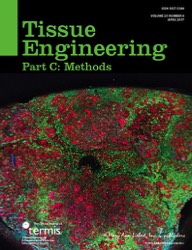Magnetic field and cells labeled with IO particles

Labeling using iron oxide particles enables cell tracking via magnetic resonance imaging (MRI). However, the magnetic field can affect the particle-labeled cells. Here, we investigated the effects of a clinical MRI system on primary human hepatocytes labeled using micrometer-sized iron oxide particles (MPIOs). HuH7 tumor cells were incubated with increasing concentrations of biocompatible, silica-based, micron-sized iron oxide-containing particles (sMPIO; 40 – 160 particles/cell). Primary human hepatocytes were incubated with 100 sMPIOs/cell. The particle-labeled cells and the native cells were imaged using a clinical 3.0-T MRI system, whereas the control groups of the labeled and unlabeled cells were kept at room temperature without exposure to a magnetic field. Viability, formation of reactive oxygen species, aspartate aminotransferase leakage, and urea and albumin synthesis were assessed over a culture period of 5 days.
The dose finding study showed no adverse effects of the sMPIO labeling on HuH7 cells. MRI had no adverse effects on the morphology of the sMPIO-labeled primary human hepatocytes. Imaging using the T1- and T2-weighted sequences did not affect the viability, transaminase leakage, formation of reactive oxygen species, or metabolic activity of the sMPIO-labeled cells or the unlabeled, primary human hepatocytes. sMPIOs did not induce adverse effects on the labeled cells under the conditions of the magnetic field of a clinical MRI system.

